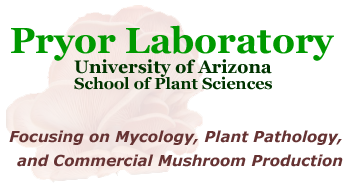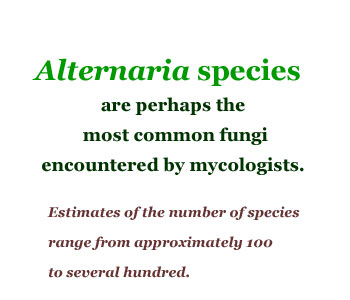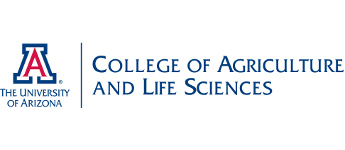Alternaria Links

Lawrence, D. P., Dugan, F. M., and Pryor, B. M. 2014. Characterization of Alternaria isolates from the infectoria species-group and a new taxon from Arrhenatherum, Pseudoalternaria arrhenatheria sp. nov. Mycological Progress 13:257-276.
Stewart, J.A, Timmer, T.W., Lawrence, C.B., Pryor, B.M., and Peever, T.L. 2014. Discord between morphological and phylogenetic species boundaries: Incomplete lineage sorting and recombination results in fuzzy species boundaries in an asexual fungal pathogen. BMC Evolutionary Biology 14:38. doi:10.1186/1471-2148-14-38
Lawrence, D.P., Gannibal, P.B., Peever, T.L., and Pryor, B.M. 2013. The Sections of Alternaria: Formalizing species-group concepts. Mycologia 105:530-546.
Stewart, J.E., Thomas, K.A., Lawrence, C.B., Dang, H., Pryor, B.M., Timmer, T.L., and Peever, T.L. 2013. Signatures of recombination in clonal lineages of the citrus brown spot pathogen, Alternaria alternata sensu lato. Phytopathology 103:741-749.
Rotondo, F., Brunelli, A., and Pryor, B. M. 2012. Comparison of Alternaria collected in Italy from apple with A. mali and other AM-toxin producing strains. Phytopathology 102:1130-1142.
Lawrence, D. P, Park, M. S., and Pryor, B. M. 2011. Nimbya and Embellisia revisited, with nov. comb for Alternaria celosiae and A. perpunctulata. Mycological Progress 11:799-815.
Baez-Flores, M. E., Troncoso-Rojas, R., Islas-Osuna, M. A., Dominguez, M. R., Pryor, B. M. Tiznado-Hernandez, M. E. 2011. Differentially expressed cDNAs in Alternaria alternata treated with 2-propenyl isothiocyanate. Microbiology Research 166:566-577.
Taralova, E. H., Schlecht, J., Barnard, K., and Pryor, B. M. 2011. Modeling and visualizing morphology in the fungus Alternaria. Fungal Biology 115:1163-1173
Pryor, B. M., Creamer, R., Shoemaker, R. A., McLain-Romero, J., and Hambleton, S. 2009. Undifilum, a new genus for endophytic Embellisia oxytropis and parasitic Helminthosporium bornmuelleri on legumes. Botany 87:178-194.
Andrew, M., Peever, T. L., and Pryor, B. M. 2009. An expanded multilocus phylogeny does not resolve species within the small-spored Alternaria species complex. Mycologia 101:95-109.
Runa, F., Park, M. S., and Pryor, B. M. 2009. Ulocladium systematics revisited: phylogeny and taxonomic status. Mycological Progress 8:35-47.
Andersen, B., Dongo, A., and Pryor, B. M. 2008. Secondary metabolite profiling of Alternaria dauci, A. porri, A. solani, and A. tomatophila Mycol Res. 112:241-50.
Park, M. S., Romanoski, C. E., and Pryor, B. M. 2008. A re-examination of the phylogenetic relationship between the causal agents of carrot black rot, Alternaria radicina and A. carotiincultae. Mycologia 100:511-527.
Hong, S. G., Maccaroni, M., Figuli, P. J., Belisario, A, and Pryor, B. M. 2006. Polyphasic classification of Alternaria isolated from hazelnut and walnut fruit in Europe. Mycological research 104:1312-1321.
Hong, G. S., Liu, D., and Pryor, B. M. 2005. Restriction mapping of IGS regions from Alternaria spp. and their taxonomic implication. Mycol. Res. 109:87-95.
Hong, S. G., Cramer, R. A., Lawrence, C. B., and Pryor, B. M. 2005. Detection of Alt a1 homologs in Alternaria and related taxa and their use in phylogenetic reconstruction. Fungal Genetics and Biology 42:119-129.
Hong, G. S. and Pryor, B. M. 2004. Development of selective media for the isolation and enumeration of Alternaria species from soil and plant debris. Can. J. Microbiol. 50:461-468.
Pryor, B. M. and Bigelow, D. M. 2003.Molecular characterization of Embellisia and Nimbya species and their relationship to Alternaria, Ulocladium, and Stemphylium. Mycologia 95:1141-1154.
Pryor, B. M. and Michailides, T. J. 2002. Morphological, molecular, and pathogenic characterizations of Alternaria isolates associated with Alternaria late blight of pistachio. Phytopathology 92:406-416.
Pryor, B. M. and Gilbertson, R. L. 2002. Relationships and taxonomic status of Alternaria radicina, A. carotiincultae, and A. petroselini based upon morphological, biochemical, and molecular characteristics. Mycologia 94:49-61.
Pryor, B. M. and Gilbertson, R. L. 2000.Phylogenetic relationships among Alternaria and related fungi based upon analysis of nuclear internal transcribed sequences and mitochondrial small subunit ribosomal DNA sequences. Mycological Research 104:1312-1321.



